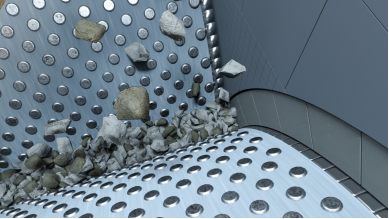HPGR Studs and Maintenance
HPGR Studs and Maintenance

First of all. what is HPGR? HPGR also called High-Pressure Grinding Roll. There is a small gap between the two grinding rollers to reduce particles by compressing and crushing the feed. In the grinding, tungsten carbide studs perform efficiently.

HPGR studs are made of tungsten carbide as the core part of the high-pressure grinding roller, which is tough and can resist high pressure and high impact. Because of these advantages, they are widely used in mining, sand and gravel, cement, metallurgy, hydro-power engineering, and other industries.
At present, the maintenance of the HPGR roller surface of the high pressure roller mill is mainly based on manual replacement of the roller stud. First, the broken roller stud is removed in time, and a new roller stud is installed in the original roller nail position in time. The wear degree of the roller surface of the high pressure roller mill is mainly related to the hardness of the ore, the greater the hardness of the ore, the more serious the wear of the roller nail. In addition, the high pressure roller mill is usually equipped with a corresponding bin, forming a material column between the two rollers, which can effectively avoid the secondary friction caused by material landing on the roller surface of the high pressure roller mill.
I wrote an article about the introduction of HPGR carbide studs before,and below the article,someone asked:How to replace the studs and blocks of the HPGR device? Here is the only answer I have known by now.
Stud replacement method:
When the stud is damaged, the stud can be heated to 180-200℃, so that the adhesive loses viscosity, because the stud and the roller surface of the stud hole is a gap fit, easy to pull out the damaged stud, and replace with a new stud, the roller sleeve can continue to use.
Repair method of the surface of HPGR:
First select the surface of the high pressure roller mill with pits to be repaired, clean the pits, and then weld a 3mm thick connection layer at the bottom of the pits, prepare the cemented carbide stud with stainless steel sleeve, and cover a layer of wear-resistant welding layer on the connection welding layer between each stainless steel sleeve, a series of process design to ensure that the cemented carbide stud and the roller surface combination is more firm with longer service life, so that the roller sleeve is more wear-resistant, easy to operate, cost saving, and has the advantages of simple operation, reasonable design and easy repair.





















